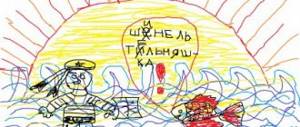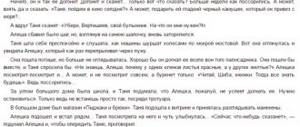What are phraseological units?
When starting research in the field of phraseology, it is necessary to define the concept of phraseology. We looked at several sources: dictionaries, textbooks, Internet portals.
This is the definition given in the “Humanitarian Dictionary” (2002)
Phraseological unit (phraseological unit, phraseological phrase) is a stable phrase that has a certain lexical meaning, constant component composition and the presence of grammatical categories. Phraseologism arises and develops in a language by rethinking specific phrases.
The Great Soviet Encyclopedia (1969-1978) has the following definition of this concept:
Phraseologism , phraseological unit, idiom, stable combination of words, which is characterized by a constant lexical composition, grammatical structure and a meaning known to native speakers of a given language (in most cases, figurative) that is not deduced from the meaning of the constituent phraseological components. This meaning is reproduced in speech in accordance with historically established norms of use.
Wikipedia gives the following definition: Phraseologism ( phraseological phrase , phraseme ) is a phrase or sentence that is stable in composition and structure, lexically indivisible and integral in meaning, performing the function of a separate lexeme (vocabulary unit).
Often a phraseological unit remains the property of only one language; The exception is the so-called phraseological tracing papers. Phraseological units are described in special phraseological dictionaries.
But on the Razumniki portal we found the following definition:
Phraseologisms are stable combinations of words, figures of speech such as: “knuckle down”, “hang your nose”, “ask a headache”... A figure of speech, which is called a phraseological unit, is indivisible in meaning, that is, its meaning does not consist of the meanings of its constituent words. It only works as a single unit, a lexical unit.
Phraseologisms are popular expressions that do not have an author.
The meaning of phraseological units is to give an emotional coloring to an expression and enhance its meaning.
In general, we are convinced that all linguist scientists agree on the definition of phraseological units:
Phraseologisms (from the Greek phrasis - expression, logos - teaching) are stable combinations of words that have been fixed as units of name: railroad , pansy or expressions of assessment: don't dare , carelessly . Otherwise - phraseological turns. In terms of semantic volume they are equal to a word, and in terms of structure they are equal to a phrase or sentence.
They have a set of characteristic features:
- are reproduced from memory as integral and basically constant in composition: although a dime a dozen, but a small pond;
- have a single meaning: to rub glasses - “to deceive”; wouldn’t hurt a fly – “quiet”;
- in a sentence they are one member (subject, predicate, attribute, etc.), due to the similarity in grammatical reference to any part of speech: not of this world (adj.); Procrustean bed (noun); to the fullest (adv.); holy priests! (interl.);
- can have one or more meanings: a wolf in sheep's clothing - “hypocrite”; to the point of a sweat - “1) to work, toil, etc. to the point of extreme exhaustion, fatigue; 2) [with a contrasting shade] until complete satisfaction, plenty.”
Phraseologisms can appear in certain combinations with other words or phrases: not remembering oneself (from what?); sharpen your skis (where? from where?).
Phraseologisms are meaningful, bright, figurative, their content affects all aspects and properties of life, people’s characters, therefore they are widely used as a visual means in works of fiction (N. Gogol, L. Tolstoy, A. Chekhov, V. Shukshin, V. Belov ).
are not translated word for word into other languages - they must be replaced with phraseological units that are appropriate in meaning and stylistic coloring, existing in the language into which the translation is being made. Source - “A Brief Guide to the Russian Language” (edited by Lekant), pp. 377-378.




